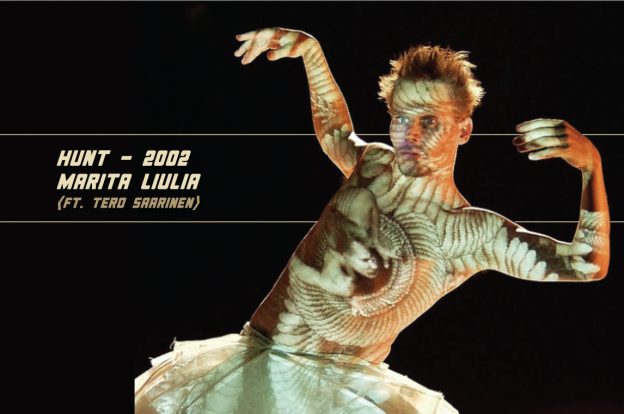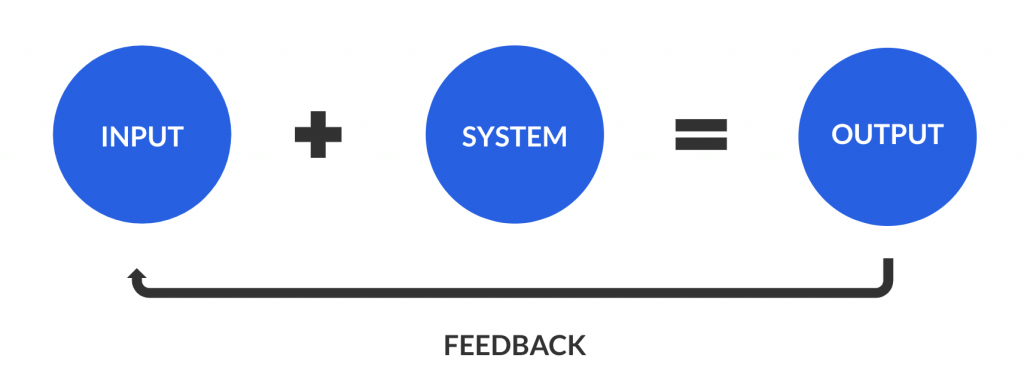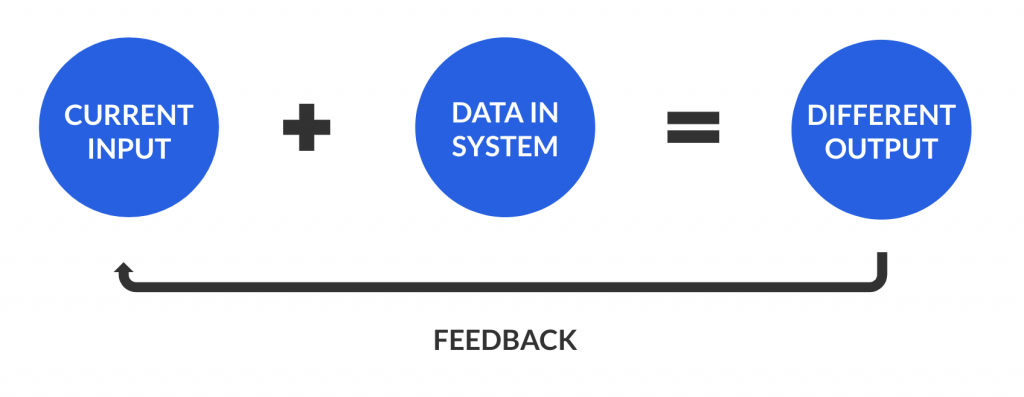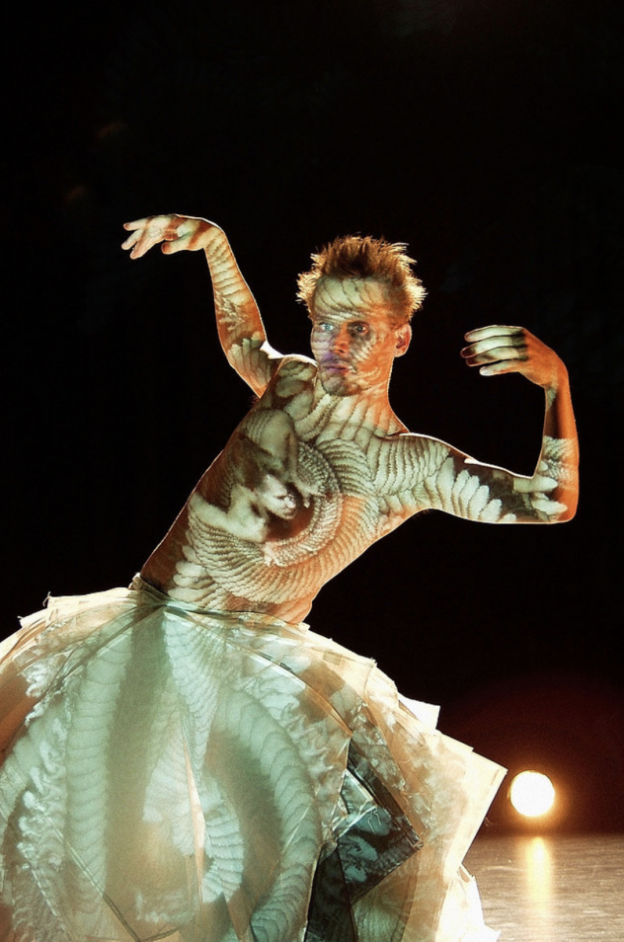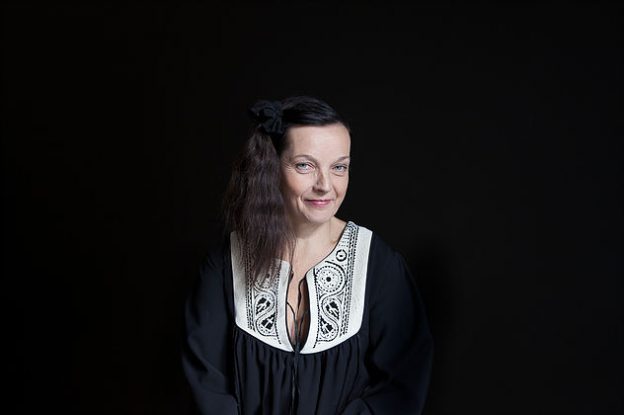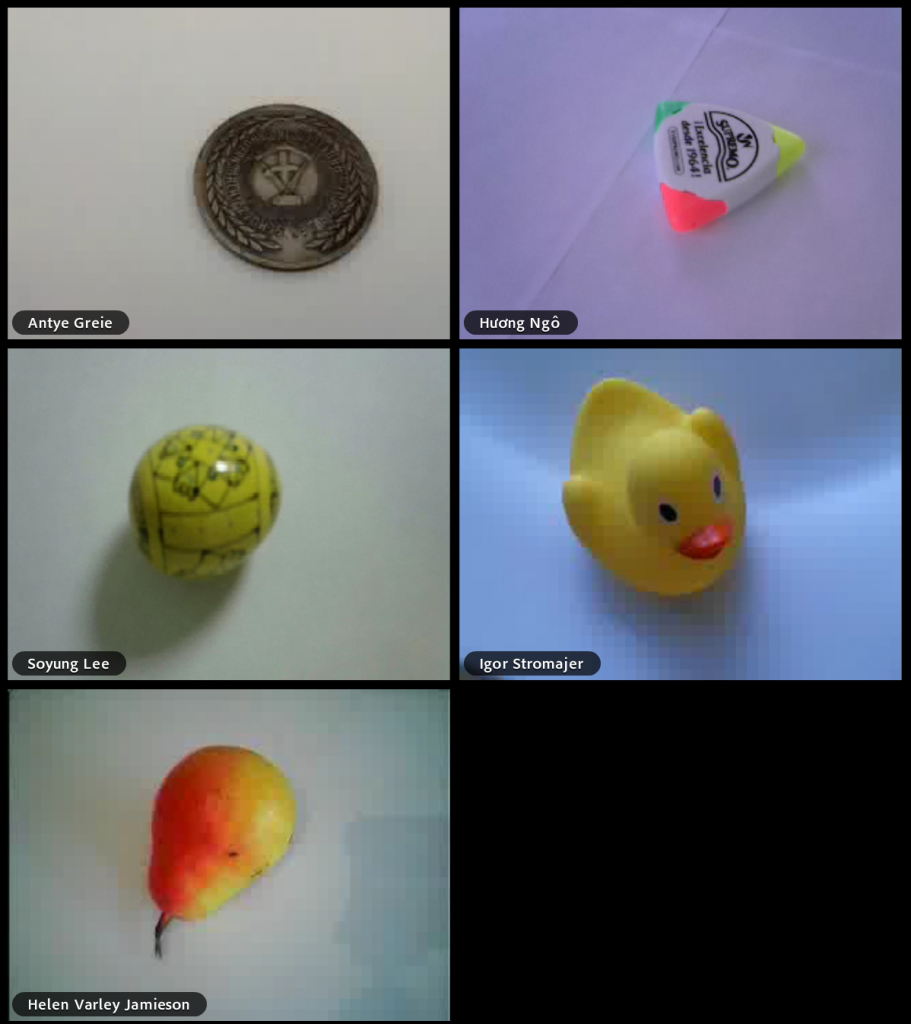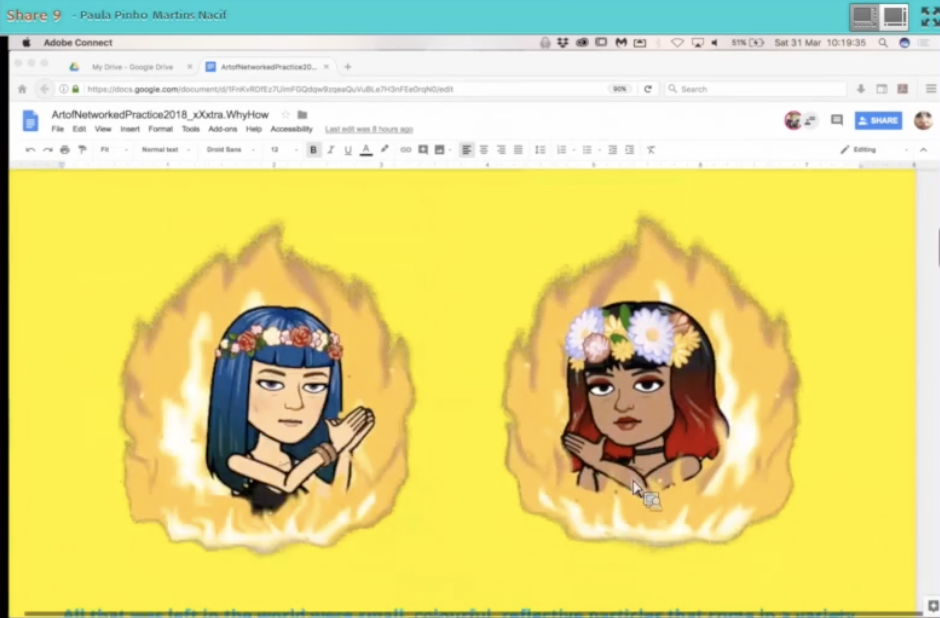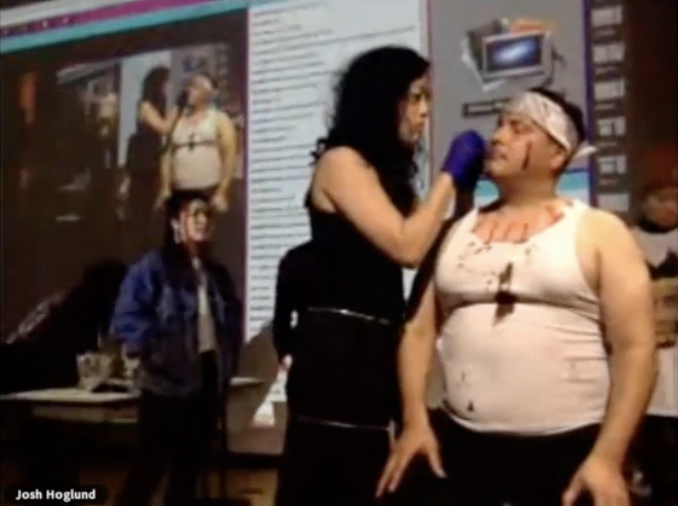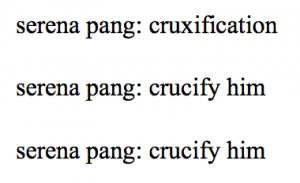PREVIOUS POSTS: ARTIST SELECTION | KEY WORK SELECTION
ABOUT HUNT (2002)
Hunt is a 40 minute contemporary dance performance that combines live multimedia and animated images. It premiered in Teatro Piccolo Arsenale, The Venice Biennale, 2002, and has been performed 177 times in 38 countries.
Tero Saarinen had choreographed and performed a mesmerizing solo to Stravinsky’s “Rite of Spring”, which was described by himself to have brought out the “violent, primitive and animal side of man at the same time as the spiritual and sacred”. He performed as both the hunter and the hunted of his inner demons – relating to the interior conflicts of the individual, his interpretation being an “offering of himself as a sacrifice rather than being a victim of society”. These symbolisms are enhanced by a stream of animated images that Martia Liulia generates on the spot and projects on his body while he dances, resulting in a genius combination of music, dance, light and images in one sublime to converse a message.
While many have commended Saarinen’s stunning movement and have also recognized Liulia’s projections, few have looked at Liulia’s multimedia involvement as significant, in the sense where they do not seem to recognize how much these images actually affect the way the audience interprets the performance as a whole. In fact, some have even questioned her involvement:
“There’s a danger that the dance’s layer of technology overtakes its physical expressiveness.” – Francois Fargue, Donald Hutera, Dance Europe, 2002
Begging to differ, I believe that Liulia’s technological layer of live multimedia on Saarinen’s body does not “overtake the physical expressiveness” of his contemporary movement, but rather acts as an amplifier towards creating a stronger sense of immersion with the piece, therefore allowing for a better transmission of intangible, imaginative concepts behind the solo towards the audience.
[To demonstrate my point, please refer to 5:10 – 6:10 of the video with sound on.]
Saarinen stays bent over for a good 10 seconds, then slowly rolls up with his eyes wide open for the rest of the minute, while questionable images and eyes are projected all over his body and costume by Liulia, in correspondence to the intense music.
Now, imagine watching Saarinen roll up for a long minute to the intense creeping music, without any form of trippy projection of light and images on his body. Would the performance have had the same effect on you, your thoughts, your interpretation of what’s going on? Very bluntly, no.
I, personally, felt a sense of suffocation that was maybe what Saarinen was trying to portray. What are all these big, intense, scary eyes? Why are they all staring at me? Why are they coming from all over the place? It is through this projection of images by Liulia, combined with the movement and expression of Saarinen as well as the music, that I am able to interpret my own understanding of the concept of hunting and being hunted. The eyes are those of society and/or my inner demons, and I am being hunted by them. They would not leave me alone! As the performance goes on, we get to see how Saarinen eventually offers himself as a sacrifice, rather than be a victim as he seems to be in this segment.
IMMERSION
Ivan Sutherland had managed to give people a chance to “gain familiarity with concepts not realizable in the physical world” through his invention of “The Ultimate Display”, which created an augmented reality that allowed people to see the calculations of what is not recognized by the common. In my understanding, he basically created a world of his own rules, and made it possible for other people to enter and see for themselves through visualized mathematical calculations.
Although in not as literal of a manner as Sutherland’s “The Ultimate Display” in allowing people to see and understand something not currently realizable, I believe Hunt has also managed to immerse audiences in identifying an intangible image and/or message created by the combination of choreography, music, lighting design as well as Liulia’s multimedia projections. The message, of course, being Saarinen’s interpretation and physical translation of the music score as described before.
CYBERNETICS
“The scientific study of control and communication in the animal and the machine.” – Norbert Wiener
Communication is defined as “the imparting or exchanging of information by speaking, writing, or using some other medium”, hence despite Hunt not being an interactive piece between the performer and the audience where the audience affects the performance’s outcome through feedback, communication still exists where a message is still being transmitted from performer to audience.
With that, as discussed in class, there is an indefinite amount of combinations for the process of cybernetics, and this is what I’ve observed in Hunt:
Performance (Mixed mediums) + Data in individual audience’s minds = Interpretation
Every individual is bound to have their own interpretation of what is trying to be communicated, given that there are no words mentioned to help convey any specific message. Every individual has had their own experiences leading up to the point of time of watching the performance, and at the time would also be going through a particular phase unique to him/her that will essentially affect their thought process (input+data) resulting in their output (interpretation).
HYPERMEDIA
Given that the stream of communication only exists between performer to individual audience members, I would not say that the effects of Hunt is like hypermedia, which focuses on a nonlinear network of information as it seems more linear than not. Perhaps in another world where mind reading exists, the different outputs that exist in each audience member’s mind could act as intangible “images”, “movies”, “graphics” or “text” that others could tap into, therefore forming an intangible sort of nonlinear network of information.
(949 words)
References:
- https://www.maritaliulia.com/productions-hunt
- Norbert Wiener, “Cybernetics in History,” 1954, Multimedia: From Wagner to Virtual Reality
- Ivan Sutherland, “The Ultimate Display,” 1965, Wired Magazine

